
Browse an alphabetical list of photographs. These historical images portray people, places, and events before, during, and after World War II and the Holocaust.
<< Previous | Displaying results 2076-2100 of 2641 for "Photo" | Next >>
Russian-born Jewish artist Marc Chagall with his daughter, Ida. The Nazis declared Chagall's work "degenerate." After the fall of France, where he had been living, Chagall fled to the United States. United States, 1942.
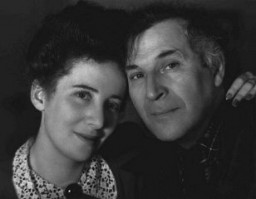
The most notorious of the 189 known interrogation centers in Cambodia was S-21, housed in a former school and now called Tuol Sleng for the hill on which it stands. Between 14,000 and 17,000 prisoners were detained there, often in primitive brick cells built in former classrooms. Only 12 prisoners are believed to have survived.
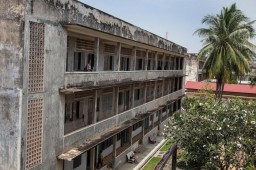
An SA member instructs others where to post anti-Jewish boycott signs on a commercial street in Germany. A German civilian wearing a Nazi armband holds a sheaf of anti-Jewish boycott signs, while SA members paste them on a Jewish-owned business. Most of the signs read, "Germans defend yourselves against Jewish atrocity propaganda/Buy only at German stores." Germany, ca. April 1, 1933.
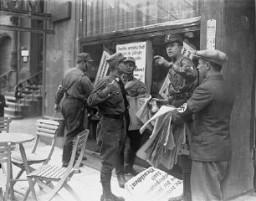
Uniformed members of the SA parade down a city street in Duisburg during a Nazi rally, circa 1928.
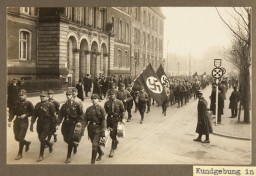
During the anti-Jewish boycott, SA men carry banners which read "Germans! Defend Yourselves! Do Not Buy From Jews!" Berlin, Germany, March or April 1933.
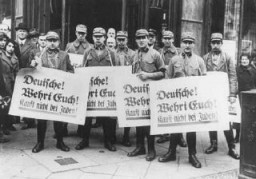
Battalions of Nazi street fighters salute Adolf Hitler during an SA parade through Dortmund. Germany, 1933.
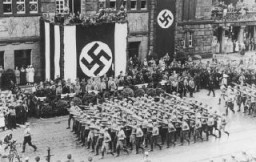
Salek Liwer (center) with friends at a Dror Zionist youth movement seminar in the Bad Gastein displaced persons camp in Austria, 1946.
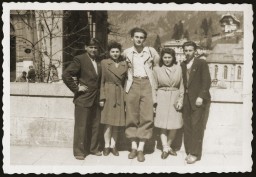
Members of the Saleschutz family do laundry in the yard of their home. Kolbuszowa, Poland, 1934.

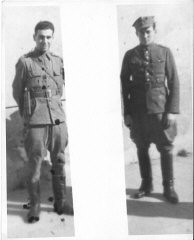
Samples of the Nuremberg Race Laws (the Reich Citizenship Law and the Law for the Protection of German Blood and Honor). Germany, September 15, 1935.
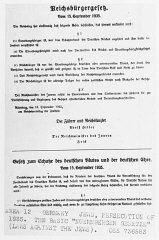
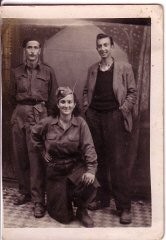
Forced laborers inside barracks soon after the liberation of Kaufering IV, part of a network of Dachau subcamps. Landsberg-Kaufering, Germany, 1945.
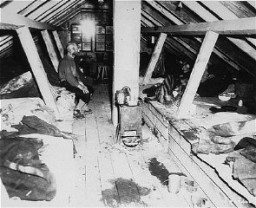
German spectators at a Nazi rally stand alongside a monument decorated with Nazi flags and a swastika emblem in Berlin. Germany, 1937.
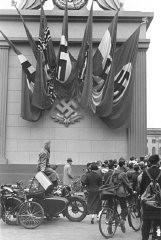
Jews carrying bundles of possessions who were forced to gather at an assembly point before their deportation from the Kovno ghetto, probably to Estonia. Kovno, Lithuania, October 1943. This photograph was taken by George Kadish.
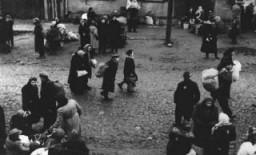
An American anti-aircraft gun, towed by a truck camouflaged with foliage, moves into position in the Hürtgen Forest to provide fire support against ground targets. November 6, 1944. US Army Signal Corps photograph taken by C A Corrado.
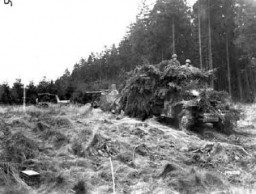
Sign used during the anti-Jewish boycott: "Help liberate Germany from Jewish capital. Don't buy in Jewish stores." Germany, 1933. (Source record ID: X89-204/08)
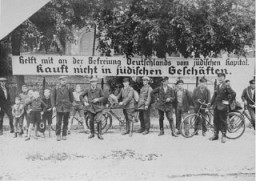
A soldier prepares to bed down for the night in a Belgian forest during the Battle of the Bulge. December 21, 1944. US Army Signal Corps photograph taken by J Malan Heslop.
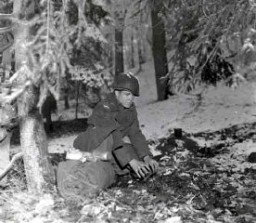
Stretcher bearers carry a wounded soldier during the Battle of the Somme in World War I. France, September 1916. IWM (Q 1332)
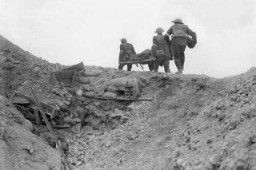
Construction of Oskar Schindler's armaments factory in Bruennlitz. Czechoslovakia, October 1944.
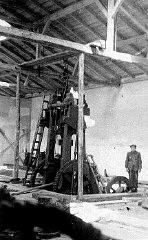
This clandestine photograph taken by George Kadish captures a scene during the deportation of Jews from the Kovno ghetto in German-occupied Lithuania in 1942.
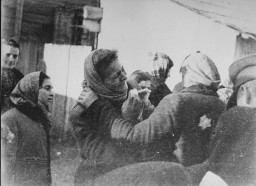
Scene during the Evian Conference on Jewish refugees. On the far right are two of the US delegates: Myron Taylor and James McDonald of the President's Advisory Committee on Political Refugees. Evian-les-Bains, France, July 1938.

On August 1, 1936, Hitler opened the 11th Summer Olympic Games. Inaugurating a new Olympic ritual, a lone runner arrived bearing a torch carried by relay from the site of the ancient Games in Olympia, Greece. This photograph shows an Olympic torch bearer running through Berlin, passing by the Brandenburg Gate, shortly before the opening ceremony. Berlin, Germany, July-August 1936.

US sailors struggle to contain damage from Kamikaze attacks during the US invasion of Okinawa, the largest of the Ryukyu Islands (the islands closest to the Japanese home islands). May 11, 1945.
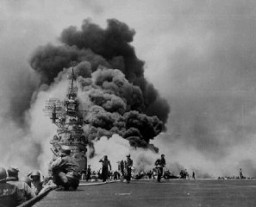
German soldiers direct artillery against a pocket of resistance during the Warsaw ghetto uprising. Warsaw, Poland, April 19-May 16, 1943.

This photo originates from a film produced by the Reich Propaganda Ministry. It shows two doctors in a ward in an unidentified asylum. The existence of the patients in the ward is described as "life only as a burden." Such propaganda images were intended to develop public sympathy for the Euthanasia Program.
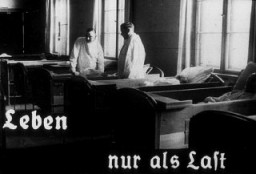
We would like to thank Crown Family Philanthropies, Abe and Ida Cooper Foundation, the Claims Conference, EVZ, and BMF for supporting the ongoing work to create content and resources for the Holocaust Encyclopedia. View the list of donor acknowledgement.